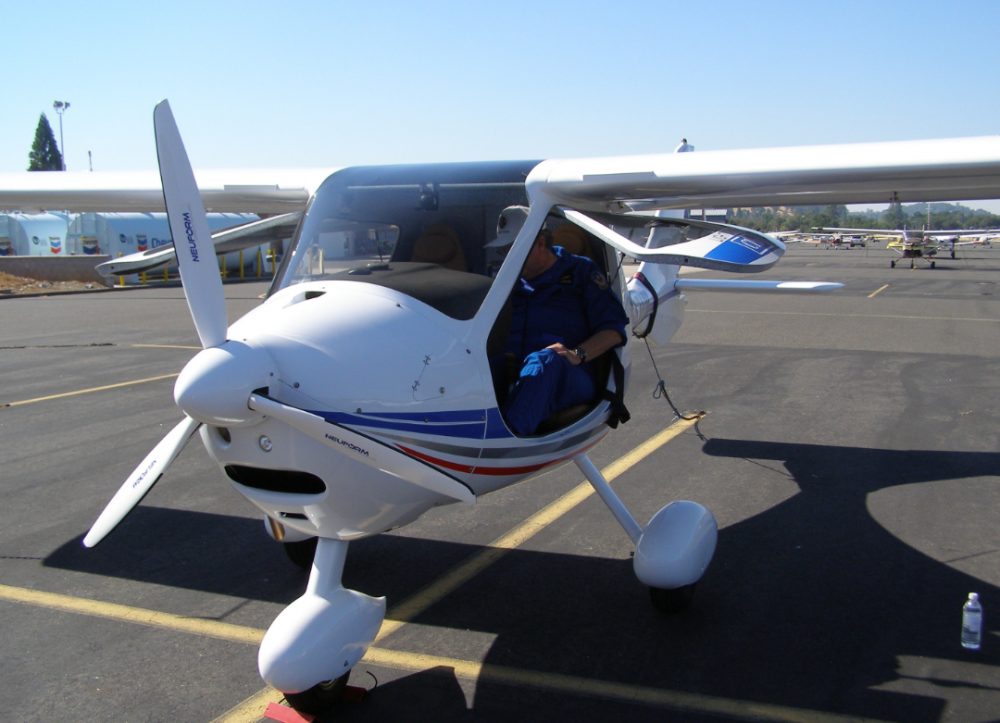I saw the yellow J-3 Cub fly into the downwind and then, when abeam the threshold of runway 14, turn left and nose down onto base leg. The airplane was close aboard and arcing quickly over to intercept the final approach to the runway. It was approaching the threshold and only about one hundred feet in the air when a Cessna 152 sitting at the hold short pulled out onto the runway in front of it. I couldn’t hear the Cub’s engine, but its pilot reacted immediately; the Cub leveled off, flying over the top of the Cessna. The Cessna sat frozen, its pilots made aware by the Cub’s shadow and its presence overhead that they had almost caused a collision.
I didn’t have my handheld radio with me, so I was uncertain if the Cub had broadcast its position in the pattern. If it had a radio at all, that is. It was probably not equipped with one. Even if it had been, the fact that the pilot didn’t use it was irrelevant. No one is required to make any radio transmissions in the pattern at a non-towered field, something many pilots either aren’t aware of, forget, or ignore.
When you’re engaged in a dogfight, you quickly learn the only thing that’s going to keep you alive is your visual lookout, no matter what technology is onboard. I call that being “EYEBALLS OUT”! (Yes, the term is used more routinely to describe the direction of g-forces one is experiencing in the cockpit; but it’s appropriate to use it here to distinguish where one is looking.)
Yes, the Airman’s Information Manual and other aviation safety materials recommend radio protocols for pilots to use to stay informed of each other’s position in the traffic pattern. That communication is very helpful and certainly best practice. But I’ve often heard comments that make it clear we EXPECT other pilots to use the radio and often consider it poor form when they don’t. Well, it is, but that expectation is OURS and can be and often is unrealistic. Your best advice in this matter comes from the movie “The Princess Bride” where the Dread Pirate Roberts tells Montoya, “Get used to disappointment”. If you have become dependent on radio calls to keep you safe in the pattern, the problem is yours and you are likely to find out the hard way when your belief and your practice is badly placed.
The only thing that’s going to keep you safe in the pattern…or in flight…is your EYES! If you’re taxing around the airport or flying the pattern convinced that the radio is going to keep you safe, you have, as we also used to say in fighters: “your head up and locked”.
I was taught when checking traffic at a non-towered field to do a 360 on the taxiway before pulling forward toward the runway for takeoff. I teach this to my students. That said, my CTSW has a very wide turning radius and some taxiways at smaller airports don’t support it, so I’d be lying to say I always perform it. What I always do, however, is make sure I visually sweep the entire downwind and then turn my airplane enough to ensure I can see all the way down the final approach and about twenty to the thirty degrees to the side opposite the pattern before pulling forward toward the hold short. This ensures I not only see anyone coming down the final approach but anyone who has overshot final and is correcting back or is approaching the final from the other side. This is especially critical at airports where there is helicopter activity, where they may be flying downwinds on the opposite side of the pattern to the fixed-wings. (This is a strong reason to take the time to perform the 360 sweep, as long as you’re really paying attention to it and not just going through the motions assuming no one is there.) And anything you choose to do to assist your visual lookout MUST take into consideration the blind spots in your aircraft; it’s up to you to know where they are and do what you need to in order to work around them.
It’s no less critical to stay “eyeballs out” at towered fields. Most mid-air collisions happen within 5 miles of an airport; and whether the field is towered or non-towered seems to make no statistical difference. The radios can help you get or maintain situational awareness for things you can’t necessarily see; but, in the end, it’s your eyes and your reactions that are going to keep you safe. The regs require you to “see and avoid” even if you are flying IFR (as unfair as that might sometimes seem.). Additionally, today’s technology laden cockpits lure us all to be “eyeballs in”, a problem that’s going to be made worse by ADS-B. It’s great to see that target you can’t see on your iPad and maneuver early to avoid it, but if you smash into the airplane not displayed while doing so, you haven’t gained a thing.
Instructors have to work twice as hard at keeping a lookout; trying to keep tabs on what their students are doing pulls their eyeballs in; so, if you’re flying with one, keep your eyes moving and help make sure you both come back from the flight alive and unhurt. And, Instructors, all of us get engaged with something they are doing and keep our eyes too much inside; but we are also supposed to be setting an example and keeping things in perspective. During many flights, we are the Pilot in Command; so, if anything unfortunate happens, it can be ultimately on us.
There were two people in that Cessna 152.
